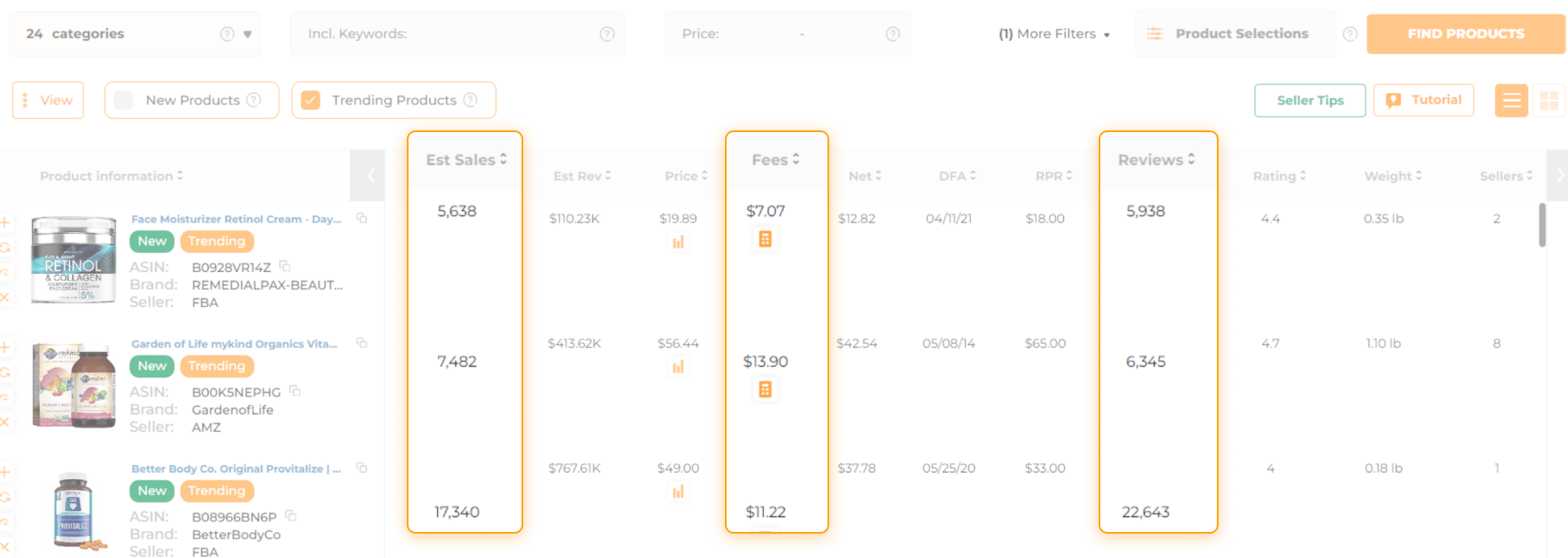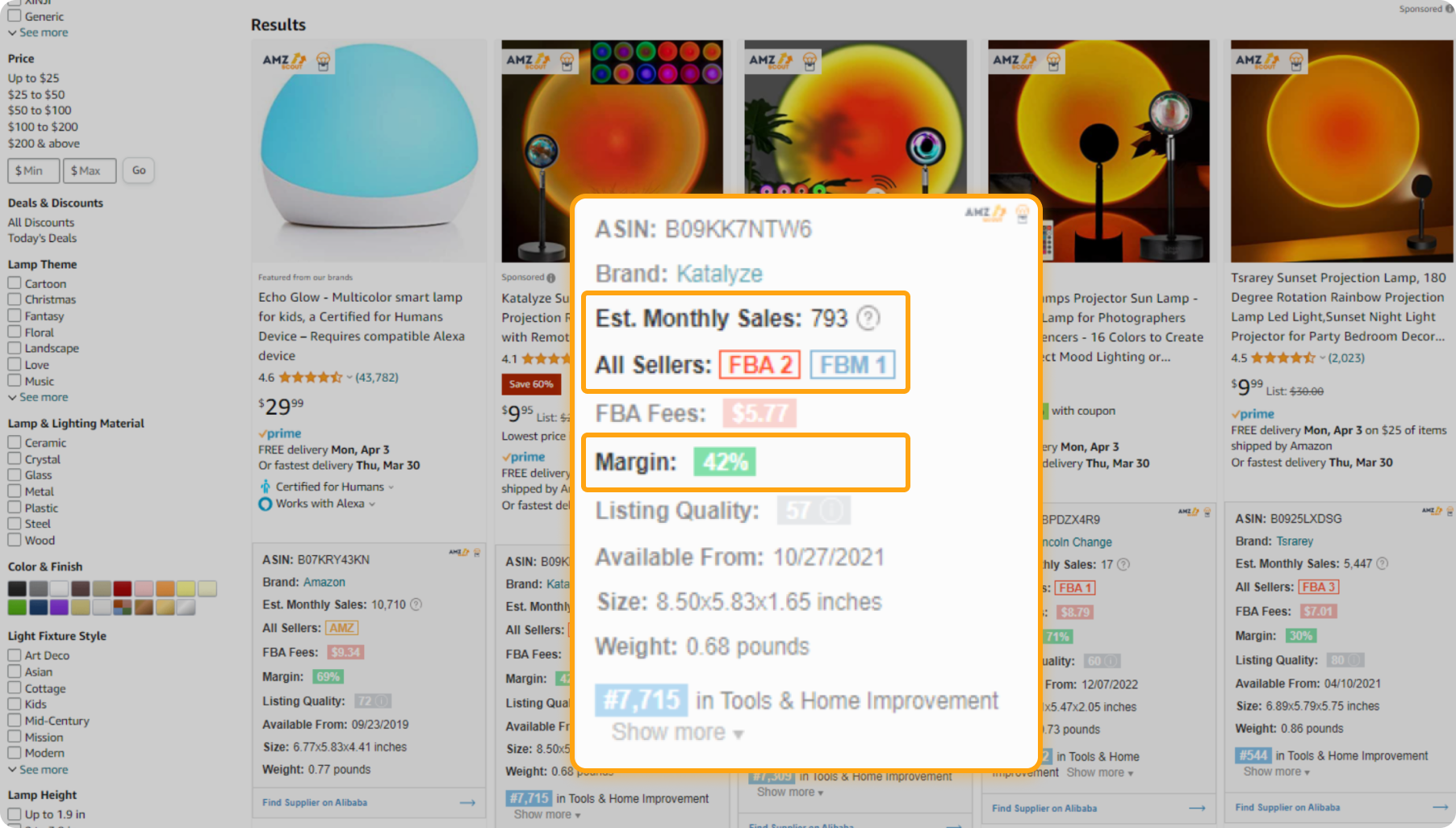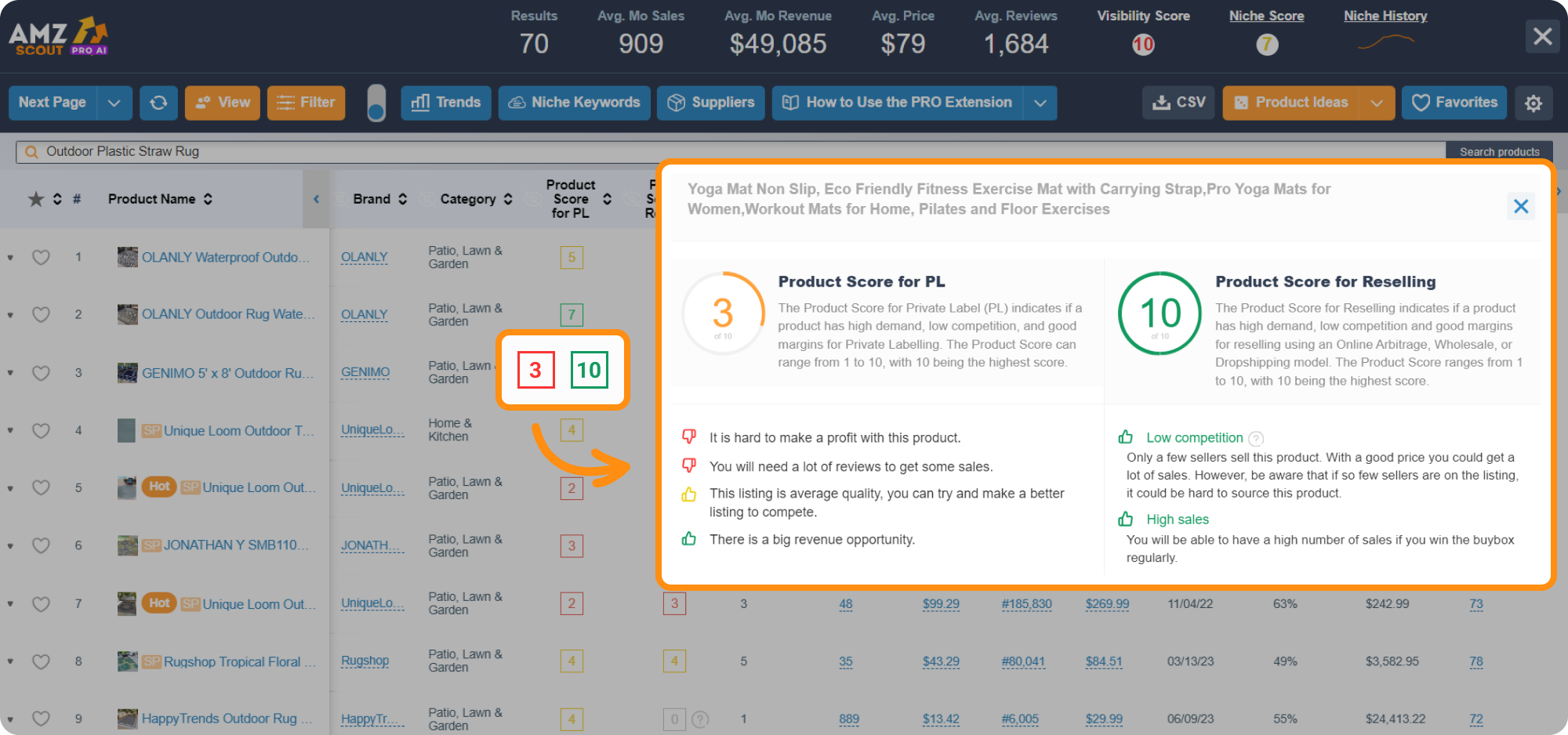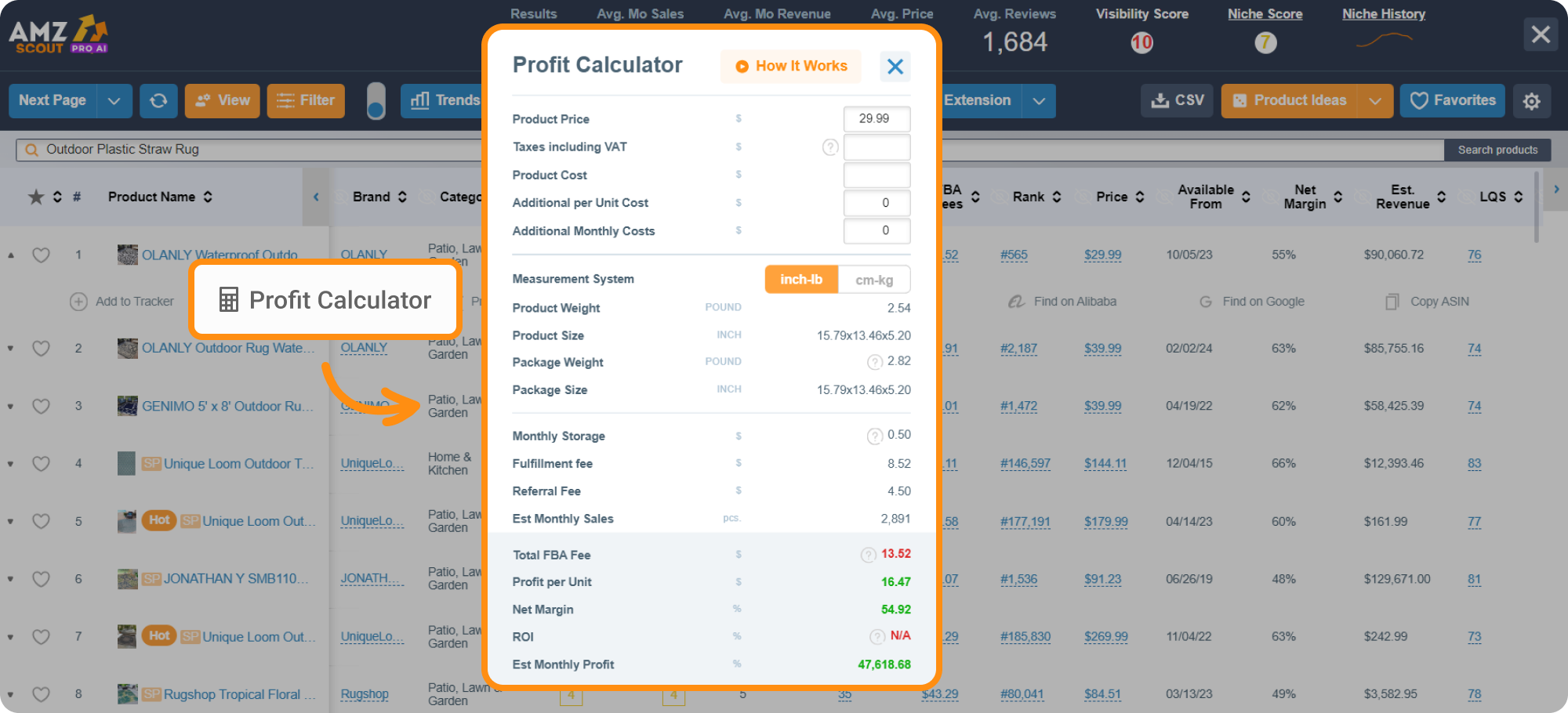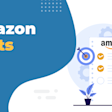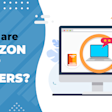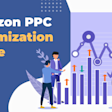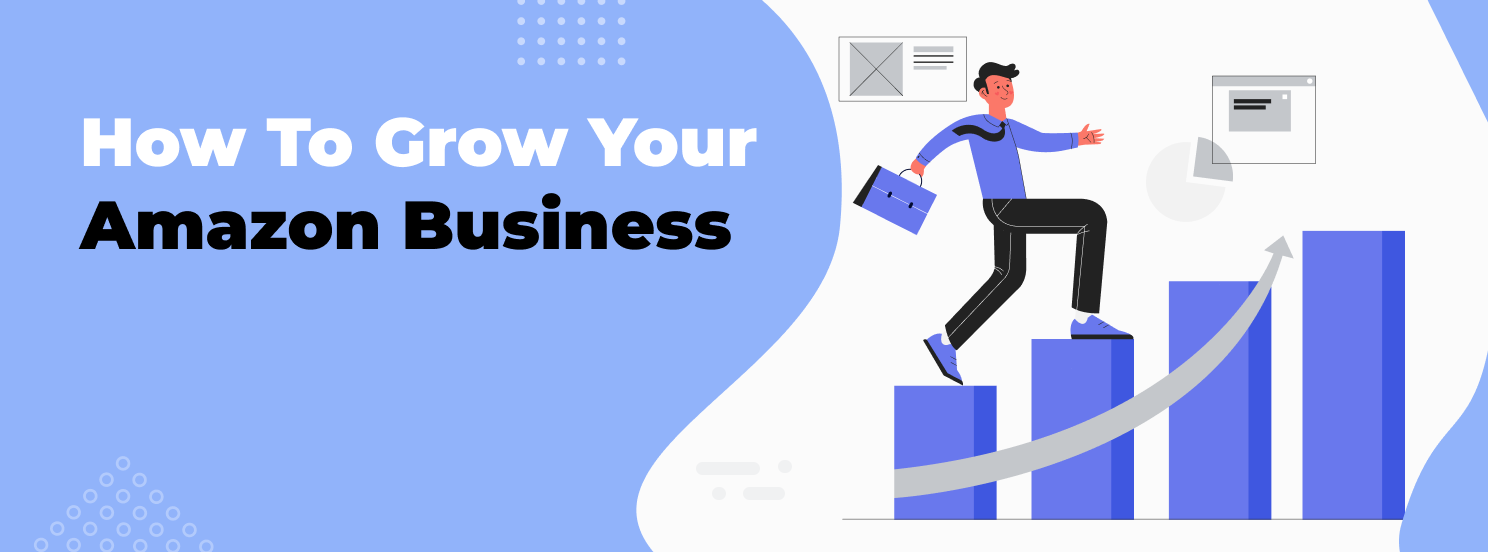
How to Scale Your Amazon Business: 11 Expert Tips for Growth and Profit
Scaling up a business can help Amazon sellers achieve one of their primary goals—increasing revenue. Implementing effective business growth strategies can help to boost your sales, reduce costs, expand your customer base, and more. To fully capitalize on these benefits, it's crucial to carefully develop and execute a robust strategic plan.
In this article, we will explore how to scale your Amazon business effectively, and provide 11 actionable tips for achieving growth.
Table of contents
Streamlining Operations
To accelerate the growth of your business, it's essential to streamline your operations. Delegating tasks and automating routine activities allows you to respond more effectively to market demands and focus on key tasks that require your direct involvement. Here are a few ideas to help you achieve this:
Tip #1: Optimize Your Supply Chain and Logistics
Consider using Fulfillment by Amazon (FBA) to streamline your operations. With FBA, Amazon handles your order fulfillment and shipping, freeing you from managing a warehouse or handling storage logistics. Your supplier can send products directly to FBA centers, eliminating the need for you to do anything. FBA also ensures two-day delivery for customers, boosting your chances of making a sale.
Keep in mind that it might be better to find a local supplier for your products. This can significantly reduce delivery costs and shipping time. Having a supplier in the same time zone also facilitates more efficient communication, so you can address issues promptly and maintain a smooth supply chain, ultimately improving your operational efficiency.
Tip #2: Implement Automation Tools
To free up your time and avoid errors that might happen when doing things manually, consider implementing tools that can automate your business. There are many areas in which these can be used - key processes include:
Inventory management: Use inventory management software to avoid overstocking or going out of stock. For example, you can use a free tool like Veeqo, which is provided by Amazon to help sellers stay efficient.
Product ideas search: Instead of spending hours scrolling through bestseller lists and social media in search of product ideas, use the AMZScout Product Database for a faster search. Applying filters like monthly revenue, estimated sales, and others helps you find product ideas efficiently that meet your criteria.
Pricing: Use tools like the OA, Dropshipping and Wholesale Extension by AMZScout to see winning Buy Box prices and adjust your own accordingly. This enables you to stay competitive and maximize your sales potential.
Reporting and analytics: Take advantage of Amazon's free reports to track your performance accurately. Amazon Brand Analytics offers detailed insights on customer search terms, demographics, and market trends.
Review management: Analyzing hundreds of reviews manually to identify areas for improvement and features to highlight in your listing can be incredibly time-consuming. Instead, use the AI Review Analyzer to quickly see what customers like and dislike about any product. Simply enter the ASIN, and the tool will highlight its key strengths and enhancement areas within seconds.
By automating these processes, you can streamline your daily routines and boost the overall success of your business.
Tip #3: Hire and Delegate
Even if you are a jack-of-all-trades, handling all aspects of an Amazon business can be incredibly labor-intensive and time-consuming. While some tasks can be managed with tools, others are handled more efficiently by hiring or delegating them to specialists. This allows you to save time and see positive results. Here are a few areas to think about:
Market research: Sellerhook offers a comprehensive 2-in-1 service that identifies and researches your competitors' selling strategies and finds the best keywords for PPC and listings, giving you valuable insights and a competitive edge.
Order fulfillment: If you're not using FBA, think about hiring someone to fulfill your orders and manage your inventory. This is especially crucial during peak periods when order volumes are high.
Listing creation: Consider outsourcing your listing creation process to Sellerhook. The experts can create SEO-optimized listings tailored to your product in customer-friendly language, enhancing visibility and appeal.
Customer service: To enhance customer service, you can hire someone to respond to customer queries promptly (within 12-24 hours), allowing you to build trust and ensure repeat business.
Administration: Use a virtual assistant to help you with daily administrative tasks, so your time is freed up for more essential tasks.
Product and supplier research: Save time by delegating your research to Sellerhook’s services, whose experts will find the best products for your store and suitable for your business model, and identify reliable suppliers.
By prioritizing tasks and delegating to specialists, you ensure efficiency and focused attention on essential tasks. This approach drives overall business success and growth, allowing you to focus on what you do best.
Applying Effective Marketing Strategies
To grow your Amazon sales, increasing your product’s visibility is essential. This can be achieved by implementing a robust marketing strategy, which will help to attract more potential customers.
Tip #4: Use PPC
One of the most effective methods to enhance visibility is through advertising. Amazon offers targeted ads where you pay only when a customer clicks on the ad. This is a quick way to help you reach more customers, but it needs to be set up effectively.
A key aspect of Pay-per-Click (PPC) advertising is using the most effective keywords. By identifying and targeting trending keywords, you can attract customers who are more likely to make a purchase, thereby boosting your profits.
Consider using AMZScout keyword tools to streamline your research. With the Keyword Search tool, you can find the most frequently-researched and relevant keywords for your niche with ease. The Reverse ASIN Lookup tool allows you to spy on the keywords your competitors use, while the Keyword Tracker lets you stay updated on trends by monitoring each keyword’s performance and ranking.
PPC involves several other important factors. For more details, check out this guide to increase your product’s visibility and boost sales.
Tip #5: Offer Promo Codes and Discounts
Consider offering promo codes and discounts on your product to attract price-conscious customers. By creating a sense of urgency with limited-time deals, you can motivate customers to make a purchase quickly.
In order to be eligible to offer these promotions, you also need to have a Professional Seller account on Amazon. You can promote these kinds of offers through various channels, such as social media, email campaigns, and on your website, to reach a wider audience.
While maintaining competitive prices, it’s also crucial to ensure profitability. By monitoring the performance of your campaigns carefully, you can refine your strategy to balance attractive offers with sustainable margins.
Tip #6: Join the Subscribe & Save Program
Amazon’s Subscribe & Save program is an effective way to ensure consistent orders and foster customer loyalty. Customers can subscribe to regular deliveries of your products at a discounted rate, which is particularly beneficial for everyday essentials like deodorant, toothpaste, and pet food.
These frequently-used items appeal to customers seeking convenience and savings, which helps build brand loyalty. The program also allows you to better manage inventory by predicting demand and orderinging accordingly.
By enhancing the customer experience with reliable and cost-effective options, you can receive positive reviews and attract more customers.
By applying these strategies, you can improve your product visibility and increase your profits. It’s important to research continuously and adapt to market trends accordingly in order to optimize your efforts, and achieve sustained growth on Amazon.
Expanding Your Product Offerings
Offering a broader product selection allows you to respond to varying consumer preferences, ultimately driving higher revenue and enhancing your market presence. Here are the top-three ways to achieve this effectively:
Tip #7: Broaden Your Product Range
Consider offering new products that align with your store’s image. For example, if you specialize in eco-friendly products, ensure that any new items you sell adhere to this principle. Diversifying your product range can provide several benefits, enabling you to:
Reduce your dependency on a single product: If one product experiences a decline in demand, having other trending products can help keep your business stable.
Reach more customers: A broader product range allows you to meet diverse customer needs and generate additional sales.
Strengthen brand image: Expanding your product offerings makes your brand appear more versatile and professional.
These advantages can lead to increased orders and higher sales volume, providing more revenue for business growth opportunities. However, simply adding new products is not enough; you also need to ensure that each product is worth your time and investment.
When selecting new products, it’s vital to evaluate their profitability and other key factors. To streamline this process, consider using the PRO AI Extension by AMZScout, which provides a deep analysis of each product’s performance and market conditions.
Assessing Product Viability
To determine if a product is suitable for your store, follow these steps:
1. Install the AMZScout PRO AI Extension.
2. Search for a product. Enter a product or niche name into the Amazon search field.
3. Open the PRO AI Extension. Click the AMZScout icon in the upper right-hand corner of the page.
4. Filter products to find the best options. Click on the relevant column name on the right side of the page (such as Estimated Sales) to sort products based on the highest results. Then, select the ones that interest you.
5. Select items that suit your business model. Click Product Score for Reselling or Product Score for Private Labeling next to each product to prioritize the best options for your business model.
6. Check product performance. Click Product History under the product to verify a steady sales trend without any significant declines.
7. Calculate your profit. Use the Profit Calculator to determine your potential profit after factoring in product and shipping costs.
This approach helps you identify products that can broaden your inventory while aligning with your business goals and market demands. This allows you to improve your chances of attracting more customers and increasing your overall revenue.
Tip #8: Introduce Variations of Existing Products
You can diversify your product selection by offering variations of existing products in new styles, colors, patterns, and more. For example, if you sell thermo cups, you could introduce variations in the trending color of the year, or create designs suited for specific holidays.
This approach is convenient because you can list new variations under a single parent ASIN, consolidating all reviews in one place and avoiding the need for additional listings by using templates. It also streamlines your marketing efforts. By promoting a single product, customers can discover and choose from various available options, increasing your overall visibility and sales potential.
Tip #9: Create Bundles
By selling related products together, you can increase the total value of each sale while providing more value to the customer by addressing multiple needs simultaneously. To create a successful bundle, find products that complement each other naturally. For example, if you sell fitness balls, you could offer stretching bands as part of a bundle, or you might create a bundle of earrings and necklaces.
When creating a bundle, ensure the products are consistent and belong to the same niche. Ideally, they should be from the same brand or at least have a unifying theme, such as color or functionality. Bundled products should also offer a price advantage, meaning the total cost of the bundle should be lower than purchasing each item separately. Additionally, make sure your return policy outlines the process for returning bundles clearly to avoid confusion and ensure customer satisfaction.
Consistent product selection is crucial for Amazon business growth. By meeting customer expectations regarding quality and pricing, you can achieve long-term success and strengthen your market presence.
Exploring New Markets
One effective way to boost your business on Amazon is by reaching more customers, which can be achieved by expanding into new markets. This is cost-beneficial, as ordering more pieces from your supplier can help you negotiate volume discounts. This approach is particularly advantageous for those selling their own brand, as it can improve brand visibility and grow brand image.
Tip #10: Going International
Expanding into Amazon's international marketplaces helps you reach a wider audience and boost sales. However, it's essential to consider each country’s specifics when offering products. Here are some key points to keep in mind:
Check your product for suitability: Ensure that you can export your products. For example, certain items like alcohol may only be sold domestically, and there are restrictions on exporting collectibles or jewelry. You also need to verify that the product is worth selling in another country. For instance, skiing apparel might sell well in Northern European countries, but not in the UAE due to climate differences.
Localize your listings: Translate your listings into the local language to improve their effectiveness. Ensure that translations sound natural, as automated systems can sometimes produce unreadable text. Also, consider the local culture and religion. Make sure product descriptions or photos are not inadvertently offensive to anyone.
Consider costs: Set up effective logistics to deliver products abroad, ensuring that they are fast, customs-friendly, and cost-effective. Using Amazon FBA can simplify dealing with paperwork and customs, especially for returns. Factor in delivery costs, potential customs fees, or local taxes to adjust your product prices accordingly. Prepare all product documents and certificates in advance to avoid shipping delays.
While this approach can help grow your Amazon business and brand, remember that you can also explore new markets, not only geographically, but also through multichannel strategies. Let's discuss this further below.
Tip #11: Adopting a Multichannel Strategy
By leveraging different sales channels, you can attract more customers, increase your visibility among search results, and reduce dependency on Amazon as your only platform for selling and advertising. Here are a few additional tips:
Create your own website: Develop a branded website linked to your Amazon store to enhance your brand’s image and help customers learn about your products.
Expand to other marketplaces: Connect your Amazon store to other marketplaces, like eBay, using integration apps to reach a broader customer base.
Open an offline pop-up store: Attract local customers by setting up a temporary or permanent physical store, offering them a tangible experience with your products and boosting brand awareness.
Utilize social media: Promote and sell your products by linking your Amazon store to social media profiles like Instagram or TikTok, driving traffic and increasing sales.
By diversifying your Amazon growth strategy, you can expand your presence in the e-commerce world. It’s essential to monitor what’s working and what’s not continuously to refine and adjust your approach effectively.
FAQ
Is selling on Amazon scalable?
Yes, selling on Amazon is highly scalable, thanks to the various opportunities the platform provides. For example, you can grow your business by outsourcing shipping to Amazon FBA, which handles logistics and ensures fast delivery to customers. Additionally, you can use Amazon analytics for insights into customer behavior. Understanding and meeting market demand effectively is crucial for scaling successfully on Amazon.
How hard is it to be successful on Amazon?
Becoming successful on Amazon can be challenging, but with the right strategy, it is achievable. Key aspects to focus on include selecting the right products, implementing effective marketing, and adapting to evolving trends. Success requires constant monitoring of your performance in order to understand what works and what doesn’t, allowing you to refine and optimize your approach accordingly.
How do I grow as an Amazon seller?
Growing as a seller depends on your business model. Private label sellers should focus on building a strong brand and enhancing product quality, while resellers might expand their product range. Key strategies include boosting product visibility with ads, optimizing listings, and providing excellent customer service. Remember, growth takes time and consistent effort for long-term success.
Conclusion
Growth opportunities on Amazon depend on many factors, such as excellent customer service, a robust marketing strategy, fast shipping, and more. To maximize your business potential, consider using AMZScout and Sellerhook services to delegate labor-consuming tasks like product research and SEO strategy improvement. This allows you to dedicate more time to strategic planning and long-term growth.
